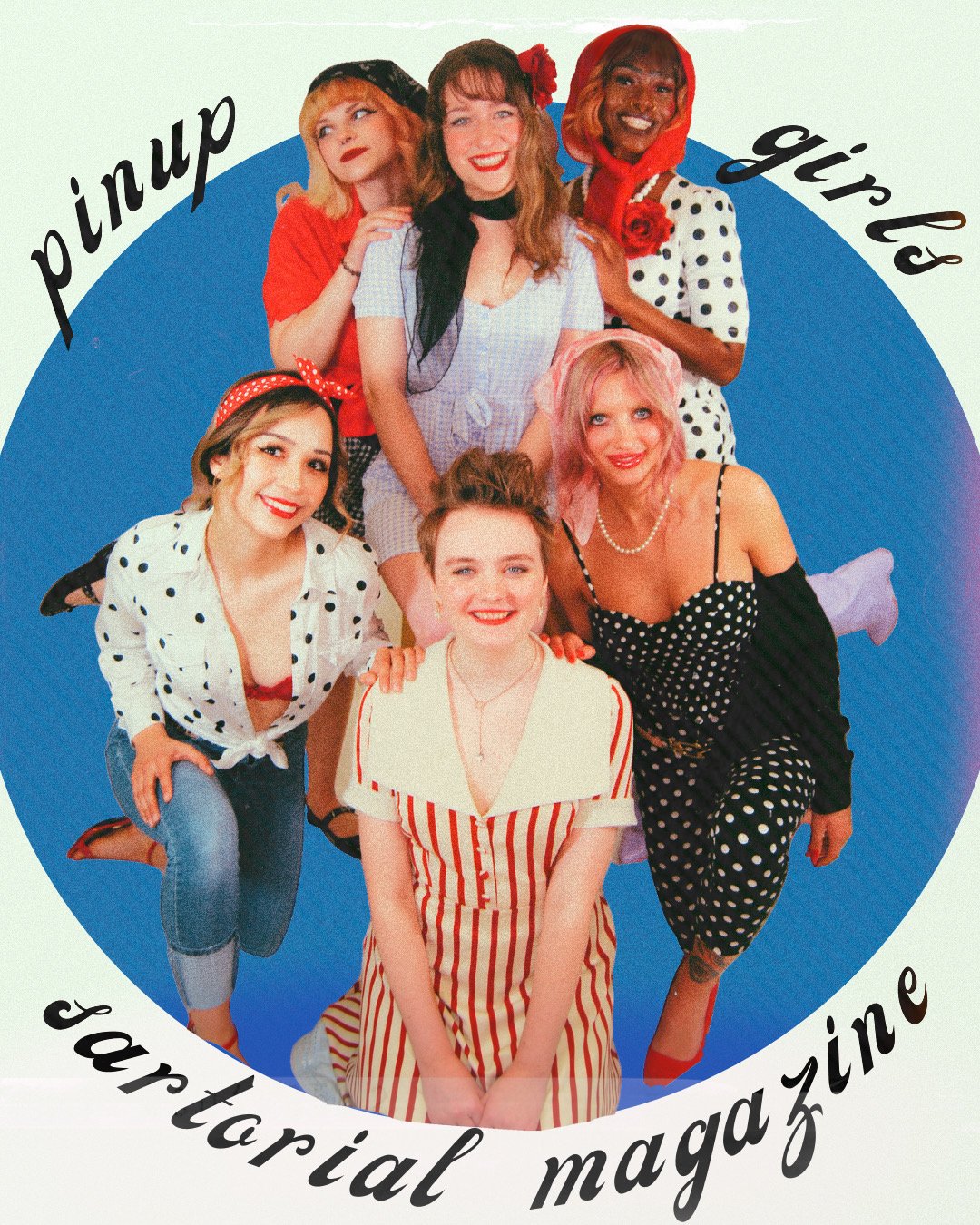The Influence of Pin-up Girls
Written by Taylor Coble
Photography & Graphics by Alexis Stutte
Modeled by Skye Holland, Emily Mettlach, Alyssa Roney, Autumn Adams, Nakaja Weaver, & Taylor Coble
In the history of fashion, pin-up girls have influenced a large cultural movement that still exists today. In a time where women’s rights were minimal, the pin-up girl look emerged. This look became empowering for women, allowing them to express their sexuality and confidence on their own terms. This aesthetic embodies a unique blend of glamor, confidence and femininity that continues to captivate audiences around the world. From the classic beauty of the 1940s and 1950s to modern interpretations, the influence of pin-up girls on fashion remains strong.
Pin-up girls emerged as cultural icons during World War II and the post-war period, representing an idealized form of beauty and style that was both alluring and empowering. Pin-up girls provided a form of escapism for both soldiers and civilians during World War II, offering a glimpse of beauty, glamor and normalcy in a tumultuous time. Images and propaganda were often used in military settings to boost morale among soldiers, serving as reminders of home and symbols of hope and optimism. Models and actresses, like Bettie Page, Marilyn Monroe, Jayne Mansfield and many more, were known for their signature looks characterized by retro hairstyles, red lipstick and figure-flattering outfits, setting the stage for a fashion revolution that would endure for decades.
The pin-up girl era was revolutionary for many reasons regarding women's fashion. For one, it embraced the celebration of curves, challenging the beauty standard with a more inclusive outlook. Pin-up style emphasized all silhouettes and figure-flattering outfits, promoting a more diverse view of beauty. Pin-up girls empowered women to embrace their bodies and express their individuality through fashion. Their bold and playful style choices encouraged women to be confident in their clothing and celebrate their unique beauty. Pin-up girls exuded confidence, sensuality and playfulness in their fashion choices, challenging typical societal norms around female sexuality and self-expression. By embracing femininity in a bold and unapologetic manner, pin-up girls helped redefine women's fashion as a form of self-empowerment.
The influence of pin-up girls on fashion can be seen in a variety of timeless staples that have become synonymous with the retro aesthetic. High-waisted skirts, polka dots, halter tops, peep-toe shoes, pumps and full skirts are just a few examples of iconic elements that continue to grace runways and closets alike, paying homage to the classic pin-up style. This style has influenced other looks, like rockabilly, an alternative spin off of vintage style. The artist Amy Whinehouse chose this aesthetic as her main style. Designers and stylists regularly draw inspiration from the retro aesthetic, infusing modern collections with elements of vintage charm and sophistication.
In a world that is constantly evolving, the influence of pin-up girls on fashion remains a timeless testament to the enduring appeal of retro glamor and sophistication. From vintage-inspired ensembles to modern interpretations that pay homage to the past, the legacy of pin-up girls continues to shape the way we think about beauty, style and self-expression in the world of







